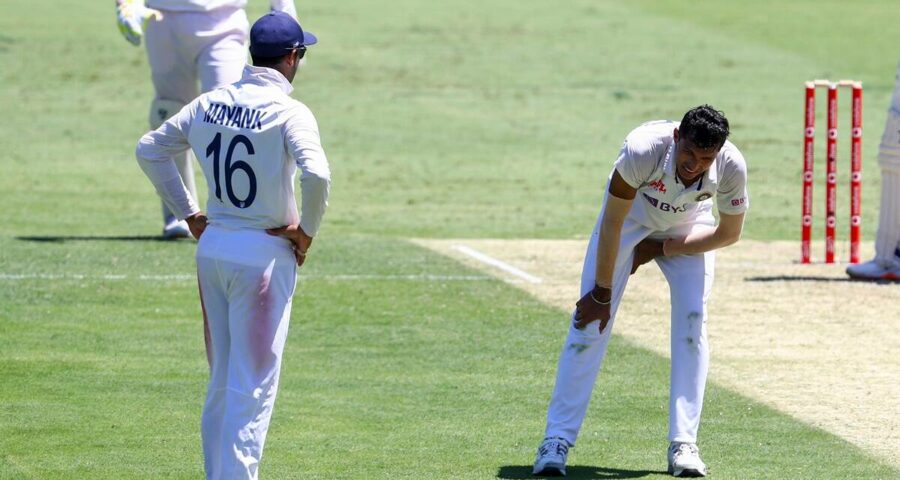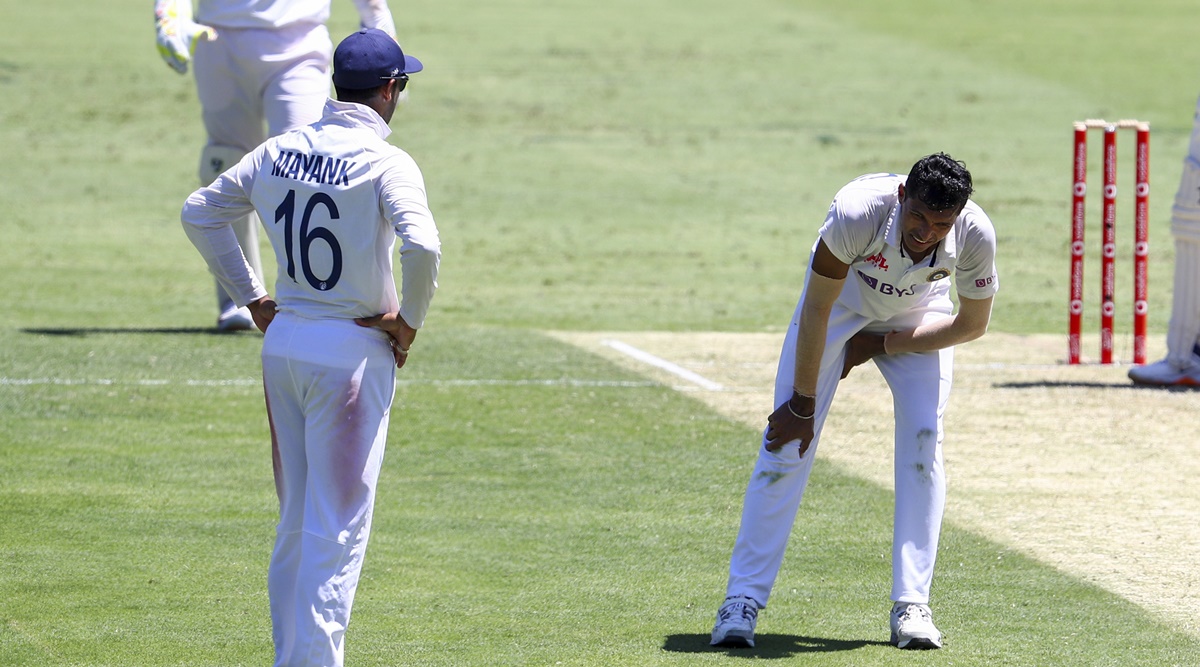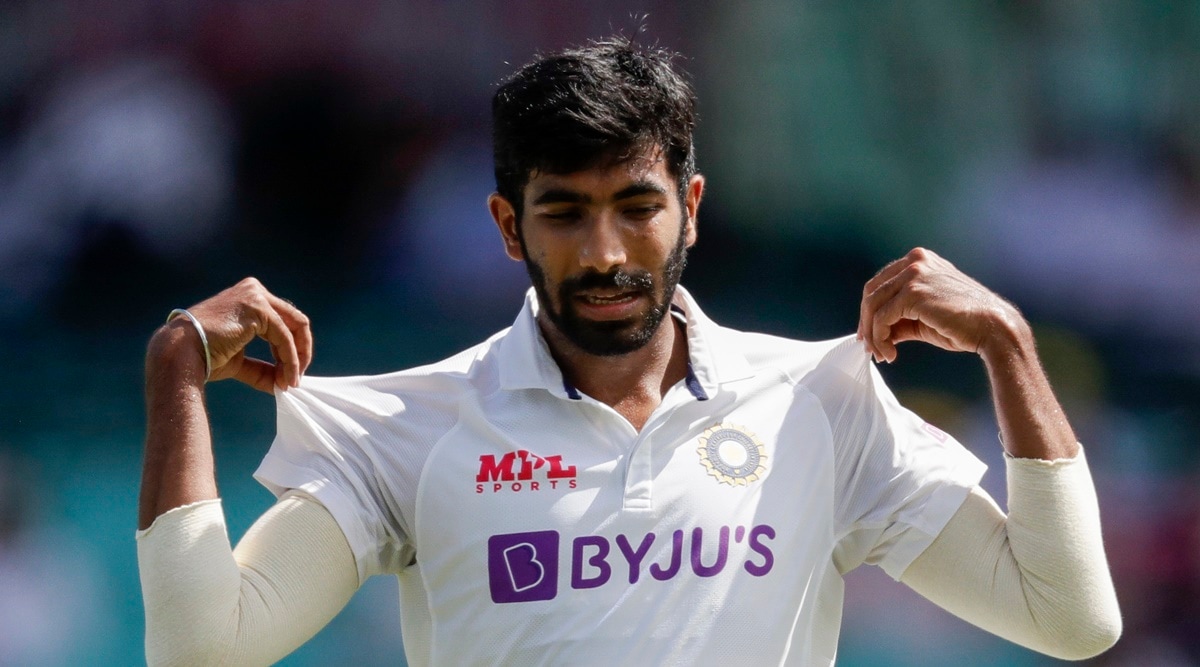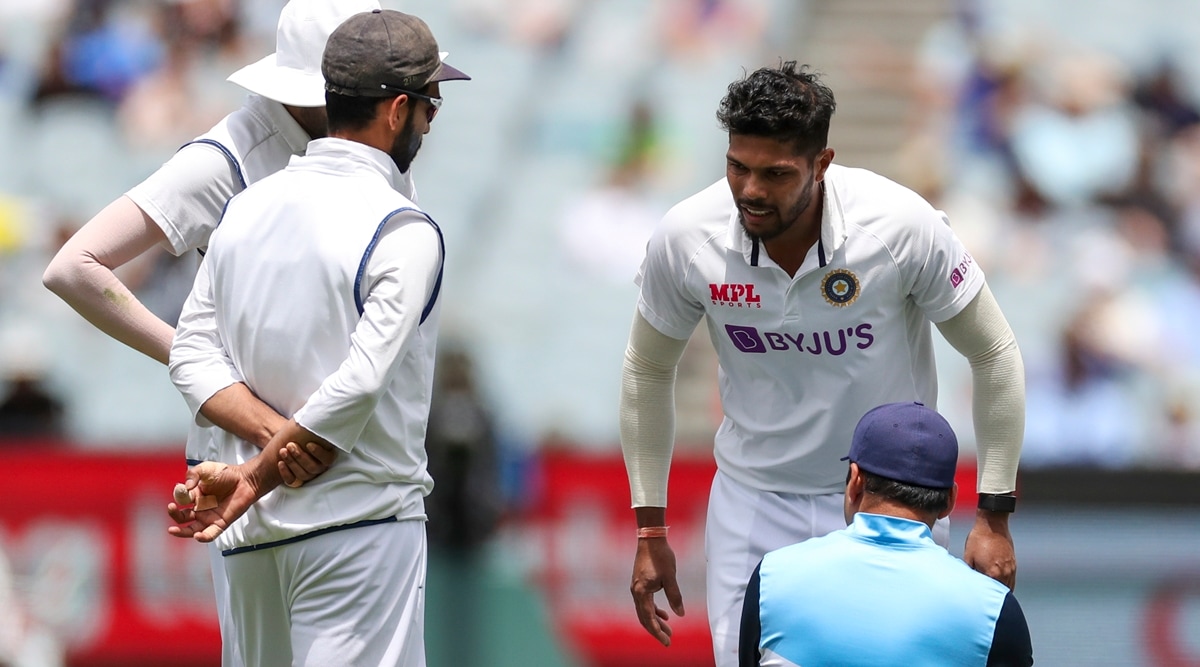The unprecedented number of walking wounded in just one tour is the highest-ever toll for Team India, be it an away series or home. Sports science experts have reason to believe that in a season after a pandemic-forced break, more squad rotation and effective workload management of the players could have helped prevent injuries.
When fast bowler Navdeep Saini hobbled off the field at The Gabba on Friday, clutching his hamstring, he completed India’s ‘Injured 11’ line-up from the tour to Australia.
The unprecedented number of walking wounded in just one tour is the highest-ever toll for Team India, be it an away series or home. Sports science experts have reason to believe that in a season after a pandemic-forced break, more squad rotation and effective workload management of the players could have helped prevent injuries.
“Muscle injury doesn’t happen overnight. It starts with a niggle and then it gets bigger. It can be a result of load and also from certain actions,” Ramji Srinivasan, India’s strength and conditioning coach during the 2011 World Cup, told The Indian Express.
“Forget the impact injuries that Ravindra Jadeja or Mohammad Shami suffered. That can happen to anybody, anywhere but load-management injuries are different.”
Consider this: Bumrah, who has not played a lot of cricket since suffering a stress fracture on his back after the 2019 World Cup, bowled 60 overs in the IPL, 27.3 overs in the 3 ODIs against Australia and 117.4 overs in the three Test matches he played.
After not stepping out of his house for almost four months due to the lockdown, the leader of India’s bowling attack has bowled 205.1 overs in the last four months. This is besides the hours he would have bowled in the nets, ran on the field and, occasionally, wielded the bat.
In contrast, his Australian counterpart Pat Cummins has bowled 42 less than him (163.1 overs) during the same period.
While the cricketers are used to a hectic schedule, what makes this season different is they began playing competitive matches without proper pre-season because of the lockdown rules that were in force back then. A pre-season allows the body to get used to the rigours of playing day-in and day-out.
“During the lockdown, even if you were training, it’s not at a competitive level. When it’s a competition, the pressures are way more. And no matter how much you train, the body forgets the rigours of a tournament,” physiotherapist Nikhil Latey, who has worked with leading Indian sportspersons, said.
Srinivasan said there is a tendency to plateau in the lockdown, which also affected the aerobic fitness of the bowlers. Without good running mechanics, he added, there is a ‘potential risk for an injury because of the demands of bowling – the foot landing, the way you transfer weight, release and follow-through all matter.’
“Suddenly after bowling four overs in IPL, you find yourself in Australian conditions,” Srinivasan said. “Cricket is a running game. Under lockdown, running fitness has been hit. That’s why bowlers are getting more injured.”
Michael Harding, who was the physio of English Premier League side Newcastle United for 14 years before joining East Bengal in the Indian Super League last October, said cricket’s ‘explosive’ nature makes the players more prone to injuries.
“Cricket can be a bit more explosive compared to a few other sports. In that, if you are a fielder, you are standing in one place or are inactive for short periods and then have to explode into a sprint from a standing start (an upright position). That might predispose them to more injuries,” Harding told this paper.
More so in Australia, where the outfields are softer and most grounds have a slightly uphill run-up area, Srinivasan added. He further explained: “The combination of the two puts great pressure on the posterior-chain of the body. The calf and glutes are always under stress. To put it simply it’s like running on a sandy beach and on hard ground. Indian grounds are harder, the ones in Australia are sand-based outfields, and hence softer. The strain is manifold, especially for India’s bowlers, who aren’t born and brought up there.”
Latey said even though Indian team physio Nitin Patel would have known these factors, there is little he could have done about it because of the scheduling of the matches. What could have prevented this, instead, is managing the players’ workload.
Sports physiotherapist Heath Matthews said the most crucial factor to minimise the risk of an injury is to go slowly. “It’s all about what we call load management. How much load are you putting your body under? And are you giving your body enough time for recovery and developing strength over a period of time?” Matthews, who is the head of sports science and medicine at HN Reliance Foundation Hospital in Mumbai, said.
Srinivasan wondered if the load monitoring of Indian players has been done properly. “There is some missing link somewhere that I can’t answer without data. Was load monitoring done properly? What were the IPL trainers doing?” he questioned.
He added that repetitive injuries to players like Bhuvaneshwar Kumar and Ishant Sharma are also a ‘worry’. “Forget IPL, go back in time and see the data. Data can’t just be for one-and-half months. Is the load monitoring deciphered properly? Why are the same injuries happening to the same guy over a period of time? Repetitive injuries are a worry, be it Bhuvaneshwar Kumar or Ishant Sharma.”
Source: Read Full Article




